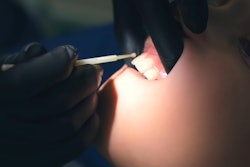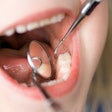
Expanding community water fluoridation (CWF) coverage may effectively lower the incidence of caries among children, according to a study published on June 21 in the Journal of the American Dental Association.
CWF provides a protective and dose-dependent effect against caries, reinforcing the need to expand CWF coverage in states like Pennsylvania where the prevalence of cavities is high, the authors wrote.
“Increasing CWF coverage will reduce caries burden among Pennsylvania children,” wrote the authors, led by Jun Yang, PhD, of the Pennsylvania Department of Health Bureau of Epidemiology and Bureau of Health Promotion and Risk Reduction.
In Pennsylvania, there are no state laws regulating CWF, and only half the population, including Philadelphia, receives fluoridated water. Consequently, the prevalence of caries among children in Pennsylvania is about 10% higher than the U.S. average for similar age groups, highlighting significant gaps in tooth decay prevention within the state, they wrote.
During the 2021-2022 school year, the Pennsylvania Department of Health, the Pennsylvania Coalition for Oral Health, and the Pennsylvania Department of Education conducted the state's first basic oral health screening survey for third-grade students.
The survey included public and charter schools, selected randomly, based on school district size and geographic region. Out of 6,058 third-grade students from 74 schools, 4,234 participated in the screening, the authors wrote.
The prevalence of caries among the students was nearly 60%. Students living in areas without CWF had a higher prevalence of caries (63%) compared to those in areas with CWF. Increased CWF coverage was significantly associated with a lower risk of developing caries, according to the results.
Specifically, for 33% to 66% CWF coverage, the relative risk (RR) was 0.86 (95% confidence interval [CI], 0.74-0.99; P = .03), and for over 66% CWF coverage, the RR was 0.84 (95% CI, 0.75-0.94; P = .002). Students with the highest CWF coverage had a nearly 16% lower risk of developing caries compared to those without any CWF coverage (RR, 0.84; 95% CI, 0.75-0.94), according to the results.
However, the study had limitations. Students were not interviewed about their oral health practices, dietary habits, or use of preventive oral health care services, so these factors could not be assessed, the authors added.
“Although Pennsylvania has no state laws to regulate CWF, these findings are persuasive for local municipalities to consider expanding CWF coverage,” they wrote.




















